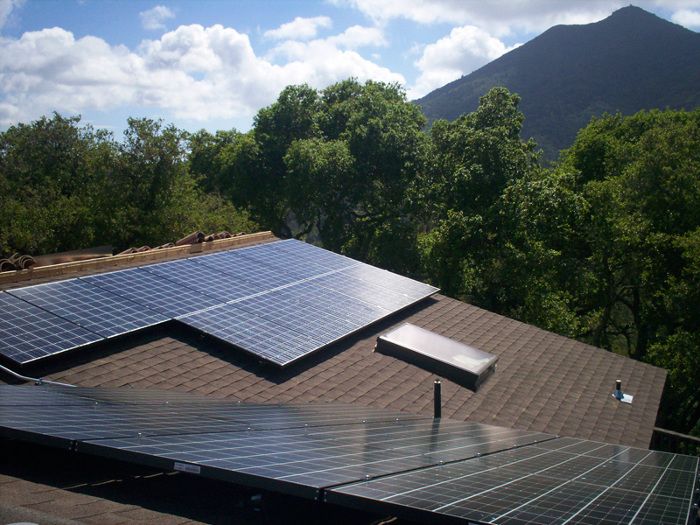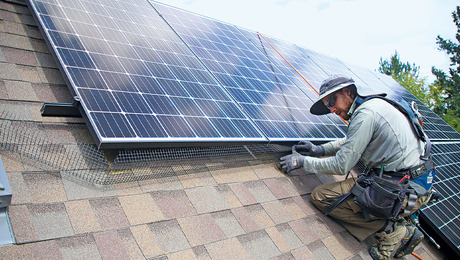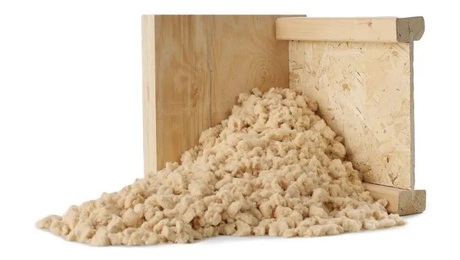
One potential sore point for homeowners spending lots of money on energy-saving features such as extra insulation and solar panels is that any added value for the house can be overlooked or ignored by real-estate appraisers, selling agents, and mortgage lenders.
In a recent Washington Post column, author Ken Harney characterizes this problem as a “chasmal disconnect in the marketplace.” Not only do appraisers lack training in how to set accurate values on green homes, Harney says, but a “vast majority” of multiple-listing services make no effort to list a property’s green features. Even as a majority of consumers say they are interested in energy-saving features in the houses they buy, the marketplace doesn’t have an effective way of making that information available or factoring it into selling prices.
Against this backdrop, the Appraisal Institute, a professional trade group representing 23,000 appraisers nationwide, has developed a new “Residential Green and Energy Efficient Addendum” to help appraisers quantify green features and energy-efficiency upgrades. It’s an update to a form originally released in 2011 and was compiled with input from the U.S. Green Building Council and the National Association of Home Builders.
The institute detailed the addendum in an announcement March 7, 2013 and listed a variety of other initiatives it has taken to educate the industry on green building.
The addendum would supplement information appraisers already gather for Fannie Mae Form 1004, the most widely used form by mortgage lenders. The new addendum is a five-page document that asks appraisers to collect a variety of additional data–everything from the type of insulation in walls and roofs to the tilt angle for solar panels on the roof. The information would then be used to help establish a market value for the property.
Appraisers may not know about the form
One obvious question is how many residential appraisers have heard of the forms or incorporated them into their work routines.
“Impossible to know,” says Ken Chitester, director of communications for the Appraisal Institute. “I will say that green remains very much a niche within the valuation profession. There are experts in the field, but frankly there is not yet great demand in the marketplace for it. [Green building] is an endlessly fascinating and quickly growing and rapidly developing area of valuation. But it is still a niche.”
Chitester says the Appraisal Institute is by far the largest group of its kind in the country; however, it represents just 27% of the country’s appraisers. Two-thirds of all appraisers do not belong to any professional organization.
That may help explain why even licensed appraisers with years of experience in the field may not have heard about the original addendum or its successor, despite what Chitester called “tremendous” outreach efforts and the hundreds of classes the institute has offered on green building since 2008.
Education, Harney says, is a continuing problem. He summarizes the concerns of industry critics such as Sandra K. Adomatis of Punta Gorda, Fla.: “Most appraisers have no specific training in valuing high-performance or green features and tend to ignore them or undervalue them in their appraisal reports to lenders. This hurts sellers and buyers alike.”
Adding complexity and cost to appraisals
Filling out the addendum will make appraisers’ jobs more complicated and more time-consuming, and that could prompt them to seek higher fees from the management companies that hire them on behalf of lenders. At the same time, management companies have an incentive to keep payments to appraisers as low as possible because they pocket the difference between the lender’s fees and what the the appraiser charges.
“This is another example of scope creep,” Chitester says, “which is to say that lenders have been seeking for several years more work but not paying more money to appraisers. Since the economic downturn in the real estate industry, appraisers have typically had to find more comparable sales than in the past and have spent more time and done more work, but they have not gotten paid more.”
Finding comparable sales, which appraisers are required to do in establishing value for a house, can be problematic under the best of circumstances. Lenders require a certain number of comparables, or “comps,” of recent sales, and they may set parameters that make acceptable comps few and far between.
When a house has lots of energy-saving or green features, it’s even harder to find like properties to compare it to. That will change as more green houses are built. But for now, appraisers in some parts of the country may work years without coming across a single solar panel, wind generator, or LEED certification.
Harney writes, “Bottom line for sellers with significant energy conservation investments: Make sure your realty agent gets them highlighted in the MLS listing. And make sure that the appraiser who is sent to value your property uses the green addendum and has adequate training to do the job. Othewise, the money you spent may not get the fair treatment it deserves in the valuation.”
Editor’s note: The author’s wife is a licensed real estate appraiser in Maine.
Fine Homebuilding Recommended Products
Fine Homebuilding receives a commission for items purchased through links on this site, including Amazon Associates and other affiliate advertising programs.

Handy Heat Gun

Reliable Crimp Connectors

8067 All-Weather Flashing Tape



























View Comments
To say that appraisers undervalue "green features", or any thing else out of the ordinary is an understatement. Three years ago I had a home built by a well known national builder. It is hardly the kind of home seen in Fine Homebuilding, but it is reasonably efficient and has a few healthy living features. It was Energy Star and Environments for Living Platinum certified. The HERS score was 67. In other words, what about what one would expect from a good production home builder's "sorta green" program in 2010. We specified all hardwood and tile floors to avoid the dust and mold accumulation inevitable with carpet on the Texas Gulf Coast. In addition, there were numerous other small healthy and comfortable living enhancements. The house was windstorm engineered even though it is located 1/2 mile outside the area where windstorm certification is required.
So, how much is all this worth to an appraiser? In some cases less than nothing. The first appraisers were completely uninterested in any features of the house, except that they lowered the value for having hardwood floors in the bedrooms instead of wall to wall carpet. The "appraised value" was so far below the cost to build that we had start over with another lender. The next lender gave me some useful guidance on handling the appraiser, including researching reasonable comps myself and pointing the appraiser at them, instead of letting them use "the nearest 5 houses that sold in the last 5 years". The second appraiser was at least willing to take the list of home features into consideration, and we were able to finance the house.
I'm a certified real estate appraiser with over 23 years in the business who specializes in high end and unique properties. The first misconception about appraisal from the owner’s standpoint is COST DOES NOT EQUAL VALUE. Example: In the northeast half the buyers aren't willing to pay anything more for an in ground pool especially is the lot is small and backyard space is limited or if they have small children. An article in Boston Globe Magazine a couple years ago detailed a person who built a home that was not a net zero energy home but close to it. He estimated the additional costs of solar, geo thermal, super insulation etc. at an additional $150,000. He'd need to live in that house 40 years to see that paid back. Try finding a buyer willing to pay him back on a dollar for dollar basis. As appraisers we are reflecting the market and when I talk to brokers about buyer’s market reactions to green / energy efficient homes while most like the idea very few are willing to their money where the mouth is. This is why very few adjustments for energy efficiency are made. There is a push on to compare operating costs of the subject property versus the comparables and adjust for the differences but this would require brokers to accurately compile and report this private data. Good luck with that, they often incorrectly list the most basic items. PKB I can’t defend appraisers who can’t take an extra 10 minutes to hear out a homeowner and possibly learn something in doing so. Unfortunately there are many form fillers in this industry who get work based on their low fee and quick turn time.